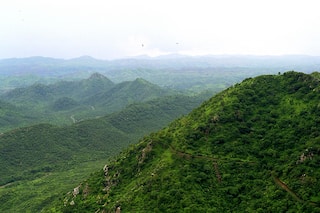Devotees Take Holy Dip In Gangasagar On Makar Sankranti, Assam Gears Up For Bihu
Lakhs of pilgrims gathered at Gangasagar to take a holy dip on the occasion of Makar Sankranti. Assam prepares for the season of plenty, 'Magh Bihu'

New Delhi: Even ahead of the auspicious time for the holy dip, lakhs of pilgrims started to arrive at the Sagar Island in West Bengal's South 24 Parganas district to take a dip at Gangasagar on 'Makar Sankranti'. According to the PTI report, the auspicious hours for the holy dip will begin around 6:50 pm, however, thousands of devotees took a dip at the confluence of the Hooghly river and the Bay of Bengal in the morning, and offered prayers at the Kapil Muni Ashram.
Over 31 lakh pilgrims have arrived at the Gangasagar Mela, considered the biggest religious congregation after the Kumbh Mela, till Friday evening since January 5, as per the report.
Several devotees were seen singing and dancing for being able to make it to the Gangasagar Mela at the Sagar Island, around 100 km from Kolkata.
"There is a saying ‘shob teertha baar baar, Gangasagar ekbar’ (you can visit other pilgrimages several times, but the Gangasagar only once). The visit to Gangasagar suffices for the hardships that pilgrims face while coming here. I feel energised after the dip," said Latika Chatterjee who came from West Bengal’s Howrah district.
Meanwhile, Assam is all set to celebrate 'Bhogali' or 'Magh Bihu' - the festival of feasting and season of plenty. Everyone join in on the preparation for the festival. In Morigaon in Central Assam, women in particular are working in community fields preparing for the three-day festival beginning on Saturday evening.
It starts with feasting called 'Uruka', as communities cook and eat together to celebrate the harvest they have reaped.
A highlight of the festivities is the painstakingly created 'bhelaghars' (hay and bamboo structures) depicting various themes ranging from human-elephant conflict, historical monuments and social issues, among others.
It is in and around these ‘bhelaghars' that the community feasts are held and the next day, those are set ablaze along with 'mejis' (cylindrical structures), also made of hay and bamboo, on the day of ‘Bhogali Bihu’, as a ritual to appease the fire god.
Women in most of the 506 villages of the district have come forward to construct the 'bhelaghars'.
Women associated with several Self Help Groups (SHG) in these villages are busy preparing sweetmeats to be served during the festival, including different types of 'pithas' (rice cakes made with jaggery).
"We make varieties of 'pithas' like the 'til pitha', 'narikol pitha', 'ghila pitha', ‘tekeli pitha’ and also savouries,” Sabitiri Deka told PTI
"The earnings from these fairs are good, and we look forward to participate as people in the urban areas love our delicacies,” she added.
A district official pointed out that women in most villages are part of several SHGs, and they form the backbone of the rural agrarian economy of Morigaon.
Another highlight of the festival in the district is the buffalo fight at Ahatguri and Baidyabori. However, following a Supreme Court directive against holding such events, the villagers organise a token symbolic fight to mark the occasion.
(With agency inputs)






































